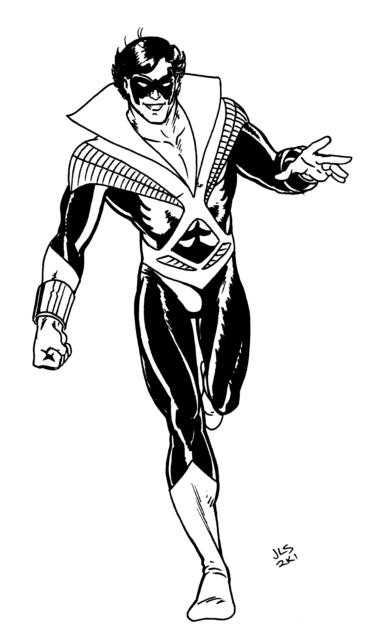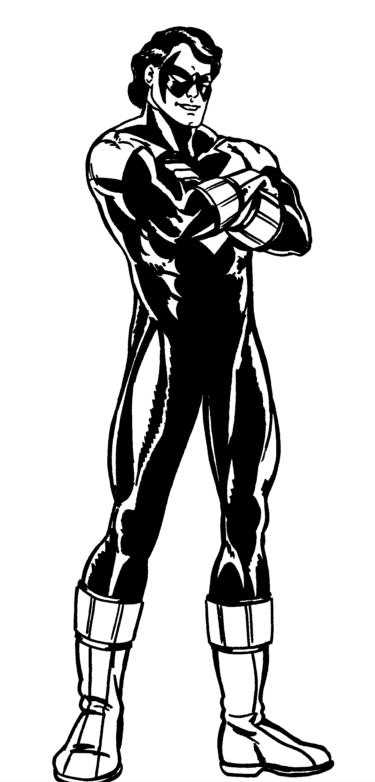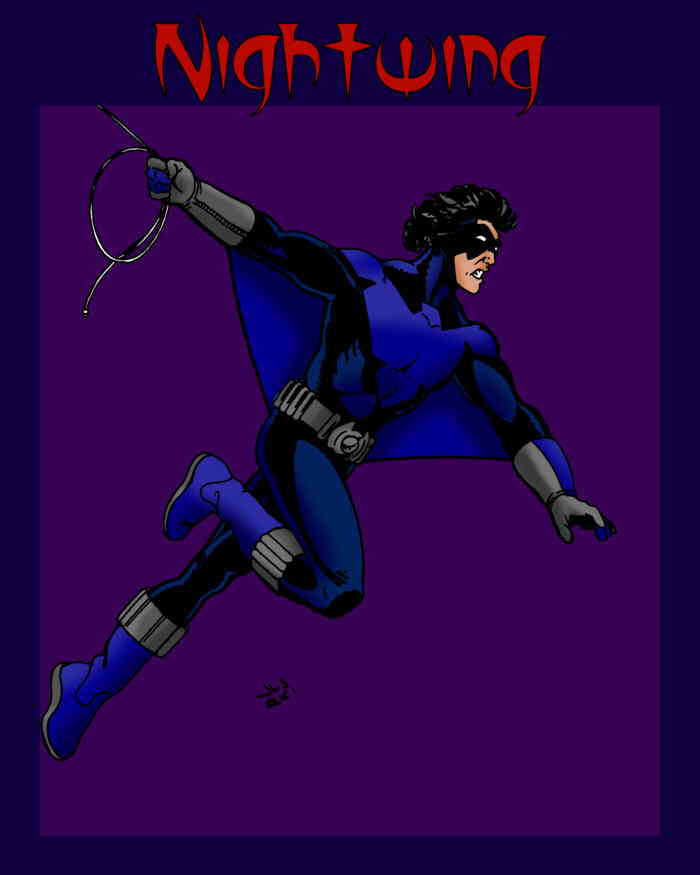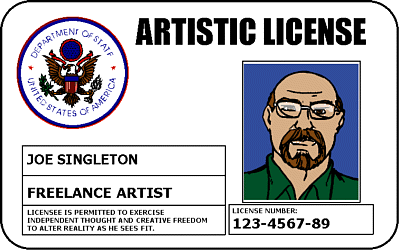|
It was 1940 and comics were still a brand new medium with few conventions or cliches. That was about to change. With the success of Superman and Batman, DC Comics would blaze a trail that others have followed for more than sixty years. Batman had debuted in Detective Comics in 1939 and the folks at DC seemed to think that if one masked crimefighter in the book was a good thing, two would be better. This led to the invention of one of the longest lasting, most controversial conventions in comic book history, the boy sidekick.
His name was Dick Grayson and he was the son of murdered circus acrobats and aerialists, the Flying Graysons. When Bruce Wayne witnessed their deaths, he decided to take the boy in as his ward. Of course, he couldn't remain merely his ward for long. Soon young Dick Grayson was introduced to Wayne's "night job", fighting crime as Gotham City's Caped Crusader, Batman. Dressing up in a colorful costume, the polar opposite of the Dark Knight, they called him Robin. Grayson's natural athletic ability, plus his acrobatic training as the youngest of the Flying Graysons made him an ideal partner.

Robin set the trend for sidekicks. Pre-teen, precocious and witty, never at a loss for words and bubbling with youthful exuberance. It would be over twenty years before Robin entered his teens, another twenty before he made it through puberty. Almost makes you feel sorry for him.
By the mid-80s, presumably Robin had finally had enough of catching cold from running around rooftops bare-legged and he retired the 40-something year gaudy red and yellow costume for something different. not only did he go for a complete color change, he changed his name, too. Unfortunately, the events of the Crisis on Infinite Earths invalidated his original reasons for choosing to call himself Nightwing, but it's still a good name.

One problem with the first Nightwing costume was the use of light blue on the boots, gloves and collar. The style of the collar really dates the costume, a bit too "disco", if you ask me. Another problem was the lack of the utility belt. This feature was supposedly compensated by the wrist-bands which had compartments for storing his gear. Not much room for crime-fighting equipment, if you ask me. Still, at the time, it was a refreshing change from the gaudy circus performer outfit he'd worn for decades. Losing the little green elf-shoes was a definite improvement.
Somewhere along the way, it was decided to give Nightwing a "darker" look. In some ways, the costume was simplified, changing the light blue "cross-strap" affair for a stylized bird emblem in a darker blue. The boots and gloves went from light blue, to black with blue stripes. Again, there is no utility belt to store all those bat-gadgets that we've come to expect from members of the Batman family.

Not bad, but it looks a bit barren, to me. Then there's the animated series Nightwing, further simplified to a black full-body suit with a blue bird and vanes stretched between the arms and the sides of the body. The animated series Nightwing can glide using those vanes, something to differentiate him from his old identity and his mentor.

I am quite fond of the character designs for the animated series. The boldness and simplicity of the costumes makes them very striking and distinctive. For my version of Nightwing, I decided to combine elements of the animated series Nightwing and the current costume. I like the heavy boots of the current Nightwing design, too many heroes wear inadequate footgear. I modified the animated Nightwing's bird emblem and added a utility belt. I also changed the mask, because I thought a different style of mask suited this design. The vanes, I added, just because they work so well in the animated series design. Besides, if Batman can use his cape to brake his fall like a parachute, Nightwing can glide on his ""wings.quot;

So, that's it, for now. Be back next month and we'll do it all over again.
|






